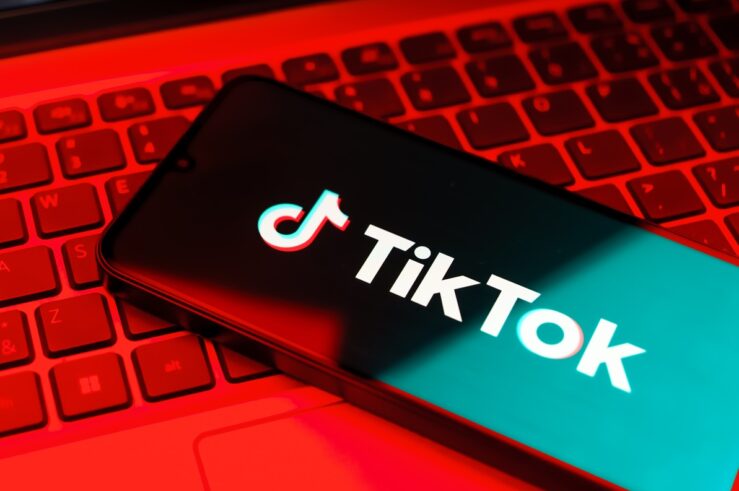This article is a part of the Should We Break Up Big Tech? Symposium symposium.
[This post is the seventh in an ongoing symposium on “Should We Break Up Big Tech?” that features analysis and opinion from various perspectives.]
[This post is authored by Alec Stapp, Research Fellow at the International Center for Law & Economics]
Should we break up Microsoft?
In all the talk of breaking up “Big Tech,” no one seems to mention the biggest tech company of them all. Microsoft’s market cap is currently higher than those of Apple, Google, Amazon, and Facebook. If big is bad, then, at the moment, Microsoft is the worst.
Apart from size, antitrust activists also claim that the structure and behavior of the Big Four — Facebook, Google, Apple, and Amazon — is why they deserve to be broken up. But they never include Microsoft, which is curious given that most of their critiques also apply to the largest tech giant:
- Microsoft is big (current market cap exceeds $1 trillion)
- Microsoft is dominant in narrowly-defined markets (e.g., desktop operating systems)
- Microsoft is simultaneously operating and competing on a platform (i.e., the Microsoft Store)
- Microsoft is a conglomerate capable of leveraging dominance from one market into another (e.g., Windows, Office 365, Azure)
- Microsoft has its own “kill zone” for startups (196 acquisitions since 1994)
- Microsoft operates a search engine that preferences its own content over third-party content (i.e., Bing)
- Microsoft operates a platform that moderates user-generated content (i.e., LinkedIn)
To be clear, this is not to say that an antitrust case against Microsoft is as strong as the case against the others. Rather, it is to say that the cases against the Big Four on these dimensions are as weak as the case against Microsoft, as I will show below.
Big is bad
Tim Wu published a book last year arguing for more vigorous antitrust enforcement — including against Big Tech — called “The Curse of Bigness.” As you can tell by the title, he argues, in essence, for a return to the bygone era of “big is bad” presumptions. In his book, Wu mentions “Microsoft” 29 times, but only in the context of its 1990s antitrust case. On the other hand, Wu has explicitly called for antitrust investigations of Amazon, Facebook, and Google. It’s unclear why big should be considered bad when it comes to the latter group but not when it comes to Microsoft. Maybe bigness isn’t actually a curse, after all.
As the saying goes in antitrust, “Big is not bad; big behaving badly is bad.” This aphorism arose to counter erroneous reasoning during the era of structure-conduct-performance when big was presumed to mean bad. Thanks to an improved theoretical and empirical understanding of the nature of the competitive process, there is now a consensus that firms can grow large either via superior efficiency or by engaging in anticompetitive behavior. Size alone does not tell us how a firm grew big — so it is not a relevant metric.
Dominance in narrowly-defined markets
Critics of Google say it has a monopoly on search and critics of Facebook say it has a monopoly on social networking. Microsoft is similarly dominant in at least a few narrowly-defined markets, including desktop operating systems (Windows has a 78% market share globally):
Source: StatCounter
Microsoft is also dominant in the “professional networking platform” market after its acquisition of LinkedIn in 2016. And the legacy tech giant is still the clear leader in the “paid productivity software” market. (Microsoft’s Office 365 revenue is roughly 10x Google’s G Suite revenue).
The problem here is obvious. These are overly-narrow market definitions for conducting an antitrust analysis. Is it true that Facebook’s platforms are the only service that can connect you with your friends? Should we really restrict the productivity market to “paid”-only options (as the EU similarly did in its Android decision) when there are so many free options available? These questions are laughable. Proper market definition requires considering whether a hypothetical monopolist could profitably impose a small but significant and non-transitory increase in price (SSNIP). If not (which is likely the case in the narrow markets above), then we should employ a broader market definition in each case.
Simultaneously operating and competing on a platform
Elizabeth Warren likes to say that if you own a platform, then you shouldn’t both be an umpire and have a team in the game. Let’s put aside the problems with that flawed analogy for now. What she means is that you shouldn’t both run the platform and sell products, services, or apps on that platform (because it’s inherently unfair to the other sellers).
Warren’s solution to this “problem” would be to create a regulated class of businesses called “platform utilities” which are “companies with an annual global revenue of $25 billion or more and that offer to the public an online marketplace, an exchange, or a platform for connecting third parties.” Microsoft’s revenue last quarter was $32.5 billion, so it easily meets the first threshold. And Windows obviously qualifies as “a platform for connecting third parties.”
Just as in mobile operating systems, desktop operating systems are compatible with third-party applications. These third-party apps can be free (e.g., iTunes) or paid (e.g., Adobe Photoshop). Of course, Microsoft also makes apps for Windows (e.g., Word, PowerPoint, Excel, etc.). But the more you think about the technical details, the blurrier the line between the operating system and applications becomes. Is the browser an add-on to the OS or a part of it (as Microsoft Edge appears to be)? The most deeply-embedded applications in an OS are simply called “features.”
Even though Warren hasn’t explicitly mentioned that her plan would cover Microsoft, it almost certainly would. Previously, she left Apple out of the Medium post announcing her policy, only to later tell a journalist that the iPhone maker would also be prohibited from producing its own apps. But what Warren fails to include in her announcement that she would break up Apple is that trying to police the line between a first-party platform and third-party applications would be a nightmare for companies and regulators, likely leading to less innovation and higher prices for consumers (as they attempt to rebuild their previous bundles).
Leveraging dominance from one market into another
The core critique in Lina Khan’s “Amazon’s Antitrust Paradox” is that the very structure of Amazon itself is what leads to its anticompetitive behavior. Khan argues (in spite of the data) that Amazon uses profits in some lines of business to subsidize predatory pricing in other lines of businesses. Furthermore, she claims that Amazon uses data from its Amazon Web Services unit to spy on competitors and snuff them out before they become a threat.
Of course, this is similar to the theory of harm in Microsoft’s 1990s antitrust case, that the desktop giant was leveraging its monopoly from the operating system market into the browser market. Why don’t we hear the same concern today about Microsoft? Like both Amazon and Google, you could uncharitably describe Microsoft as extending its tentacles into as many sectors of the economy as possible. Here are some of the markets in which Microsoft competes (and note how the Big Four also compete in many of these same markets):
- Azure in the cloud computing market
- Bing in the search engine market
- LinkedIn in the professional social networking market
- Microsoft Dynamics in the ERP and CRM markets
- Microsoft Servers in the server market
- Microsoft Store in the app store market
- Office 365 in the productivity software market
- Outlook in the email market
- Skype in the video chat market
- Surface in the tablet, laptop, and PC markets
- Visual Studio in the integrated development environment (IDE) market
- Windows in the operating system market
- Xbox in the video game console market
What these potential antitrust harms leave out are the clear consumer benefits from bundling and vertical integration. Microsoft’s relationships with customers in one market might make it the most efficient vendor in related — but separate — markets. It is unsurprising, for example, that Windows customers would also frequently be Office customers. Furthermore, the zero marginal cost nature of software makes it an ideal product for bundling, which redounds to the benefit of consumers.
The “kill zone” for startups
In a recent article for The New York Times, Tim Wu and Stuart A. Thompson criticize Facebook and Google for the number of acquisitions they have made. They point out that “Google has acquired at least 270 companies over nearly two decades” and “Facebook has acquired at least 92 companies since 2007”, arguing that allowing such a large number of acquisitions to occur is conclusive evidence of regulatory failure.
Microsoft has made 196 acquisitions since 1994, but they receive no mention in the NYT article (or in most of the discussion around supposed “kill zones”). But the acquisitions by Microsoft or Facebook or Google are, in general, not problematic. They provide a crucial channel for liquidity in the venture capital and startup communities (the other channel being IPOs). According to the latest data from Orrick and Crunchbase, between 2010 and 2018, there were 21,844 acquisitions of tech startups for a total deal value of $1.193 trillion.
By comparison, according to data compiled by Jay R. Ritter, a professor at the University of Florida, there were 331 tech IPOs for a total market capitalization of $649.6 billion over the same period. Making it harder for a startup to be acquired would not result in more venture capital investment (and therefore not in more IPOs), according to recent research by Gordon M. Phillips and Alexei Zhdanov. The researchers show that “the passage of a pro-takeover law in a country is associated with more subsequent VC deals in that country, while the enactment of a business combination antitakeover law in the U.S. has a negative effect on subsequent VC investment.”
As investor and serial entrepreneur Leonard Speiser said recently, “If the DOJ starts going after tech companies for making acquisitions, venture investors will be much less likely to invest in new startups, thereby reducing competition in a far more harmful way.”
Search engine bias
Google is often accused of biasing its search results to favor its own products and services. The argument goes that if we broke them up, a thousand search engines would bloom and competition among them would lead to less-biased search results. While it is a very difficult — if not impossible — empirical question to determine what a “neutral” search engine would return, one attempt by Josh Wright found that “own-content bias is actually an infrequent phenomenon, and Google references its own content more favorably than other search engines far less frequently than does Bing.”
The report goes on to note that “Google references own content in its first results position when no other engine does in just 6.7% of queries; Bing does so over twice as often (14.3%).” Arguably, users of a particular search engine might be more interested in seeing content from that company because they have a preexisting relationship. But regardless of how we interpret these results, it’s clear this not a frequent phenomenon.
So why is Microsoft being left out of the antitrust debate now?
One potential reason why Google, Facebook, and Amazon have been singled out for criticism of practices that seem common in the tech industry (and are often pro-consumer) may be due to the prevailing business model in the journalism industry. Google and Facebook are by far the largest competitors in the digital advertising market, and Amazon is expected to be the third-largest player by next year, according to eMarketer. As Ramsi Woodcock pointed out, news publications are also competing for advertising dollars, the type of conflict of interest that usually would warrant disclosure if, say, a journalist held stock in a company they were covering.
Or perhaps Microsoft has successfully avoided receiving the same level of antitrust scrutiny as the Big Four because it is neither primarily consumer-facing like Apple or Amazon nor does it operate a platform with a significant amount of political speech via user-generated content (UGC) like Facebook or Google (YouTube). Yes, Microsoft moderates content on LinkedIn, but the public does not get outraged when deplatforming merely prevents someone from spamming their colleagues with requests “to add you to my professional network.”
Microsoft’s core areas are in the enterprise market, which allows it to sidestep the current debates about the supposed censorship of conservatives or unfair platform competition. To be clear, consumer-facing companies or platforms with user-generated content do not uniquely merit antitrust scrutiny. On the contrary, the benefits to consumers from these platforms are manifest. If this theory about why Microsoft has escaped scrutiny is correct, it means the public discussion thus far about Big Tech and antitrust has been driven by perception, not substance.




